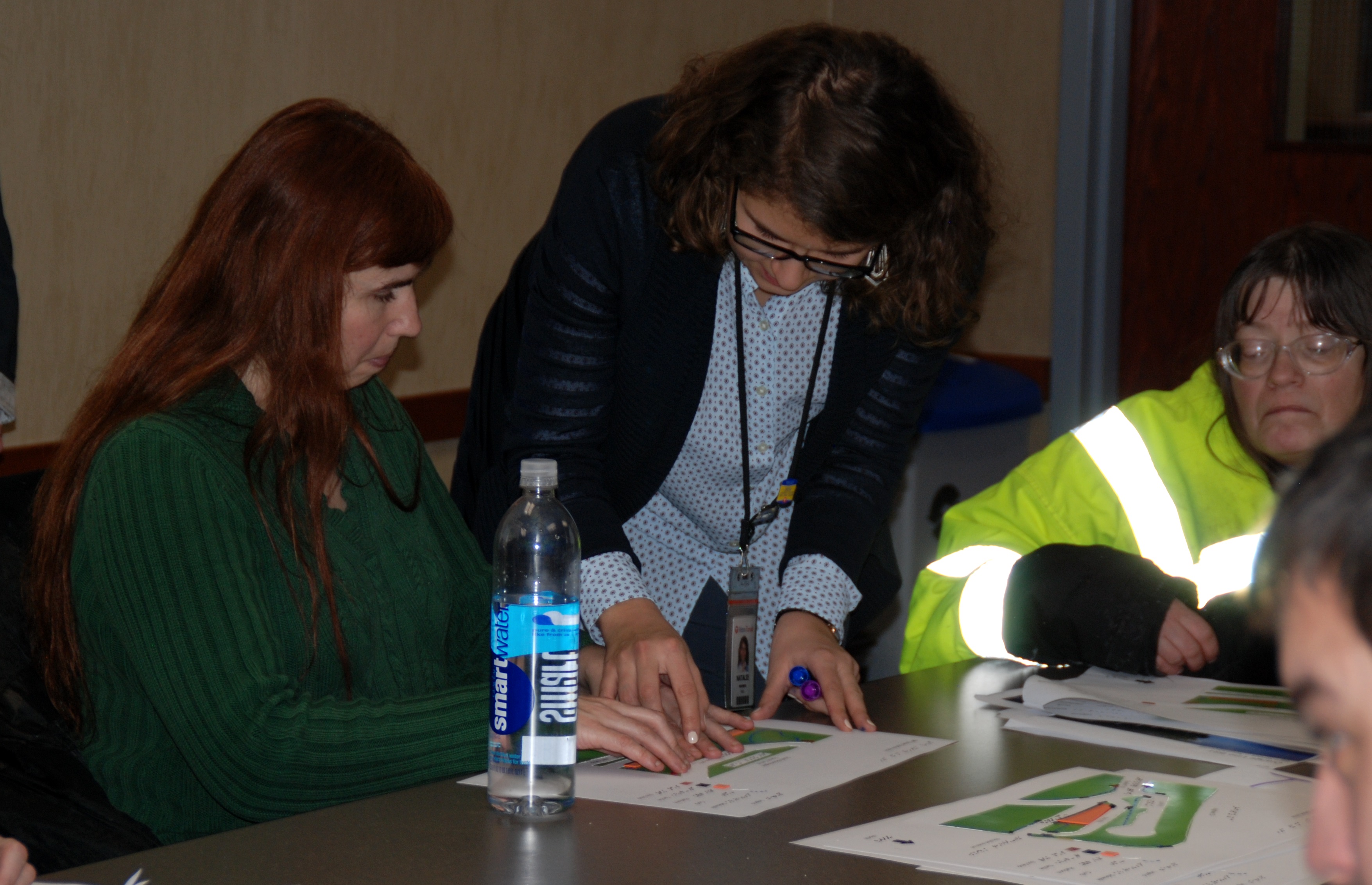 On Marq2, hundreds of buses pull quickly in and out of stops during the afternoon rush hour. At Interstate 35W and Lake Street, customers ascend a steep set of stairs to wait in what is essentially the freeway shoulder. And at the I-35W & 46th Street Station, buses pull in and out of what seems to be the wrong side of the street as passing trucks and cars overwhelm the senses.
On Marq2, hundreds of buses pull quickly in and out of stops during the afternoon rush hour. At Interstate 35W and Lake Street, customers ascend a steep set of stairs to wait in what is essentially the freeway shoulder. And at the I-35W & 46th Street Station, buses pull in and out of what seems to be the wrong side of the street as passing trucks and cars overwhelm the senses.
These are just some of the challenges faced by express and local bus customers traveling on the Interstate 35W corridor south of downtown Minneapolis. And they are all the more daunting for members of the disability community.
Planners and engineers working on the METRO Orange Line are attempting to address these and other potential barriers to using transit, though, as designs for the new Bus Rapid Transit line continue to take shape.
A key step in that process came last week, when members of the Council’s Transportation Accessibility Advisory Committee (TAAC) met with Metro Transit staff to review station designs and share their initial reactions. Representatives from the Minnesota Valley Transit Authority and cities of Minneapolis, Burnsville and Bloomington were also involved in the meeting.
TAAC members routinely advise the Council on ways to improve accessibility and get regular updates on transitway expansion plans. But the design workshop was a unique opportunity to dive deeper into the plans while there are still chances to make changes.
“These may seem like small things, but if that small thing causes you to miss the bus and you can’t get home that’s not a little thing,” said Kjensmo Walker, who chairs the TAAC. “All of these little components have to work just right.”
As Walker and others went through each station, several questions arose:
- > How can audio announcements – both inside and outside of enclosed waiting areas – be better used to let customers know their bus is approaching?
- > How can uniformity in gate letters, colors and signage make boarding locations more intuitive?
- > Is there enough room on platforms for customers in mobility devices to pass safely?
- > How will sidewalks and street crossings bring people to and from stations?
TAAC member Sam Jasmine, using layouts imprinted with braille, was especially interested in any audio features that would provide cues. Bus annunciators are helpful, she said, but they can be difficult to hear, especially in noisier areas like Marq2 and the freeway.
“It was a little bit humbling making sure I was getting on the right bus,” she said of the last time she boarded at Lake Street.
Feedback from previous workshops has proved useful. After TAAC members reviewed plans for facility improvements at the Mall of America Transit Station, restroom entry doors that could have been a barrier for people in mobility devices were replaced with a wrap-around entrance.
TAAC members have also reviewed stations plans for the Green Line Extension and will look at station designs for the Blue Line Extension and future light-rail vehicles later this year.
Comments provided during last week’s Orange Line workshop will be considered as design work continues. Final designs for the Lake Street Station are due this spring, and other station designs are expected to be completed by this fall. The Orange Line is scheduled to open in 2020.
“We’re starting the conversation today, but we want to continue to hear from this group and all our future users,” Project Manager Christina Morrison said. “This is the type of feedback that not only benefits the Orange Line, but the entire system.”
Jasmine also sees feedback from the disability community as a way to improve the system for all riders. “The rule is if something is good for someone who can’t see, it’s good for everyone,” she said.